
|
By Graham K. Rogers
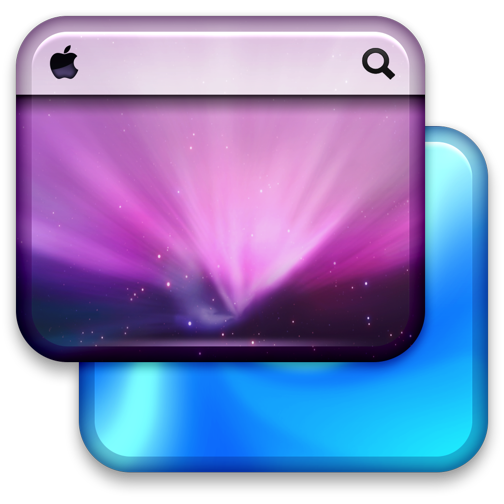
There have several major changes to System Preferences in OS X 10.8, Mountain Lion. The panel for Desktop and Screen Saver has the same functions as before, but there are a number of obvious changes, both to the desktop pictures and to the selection of screen savers.
The Desktop and Screen Saver panel controls the appearance of two fairly visible parts of the OS X interface. The panel is in two sections: Desktop and Screen Saver.
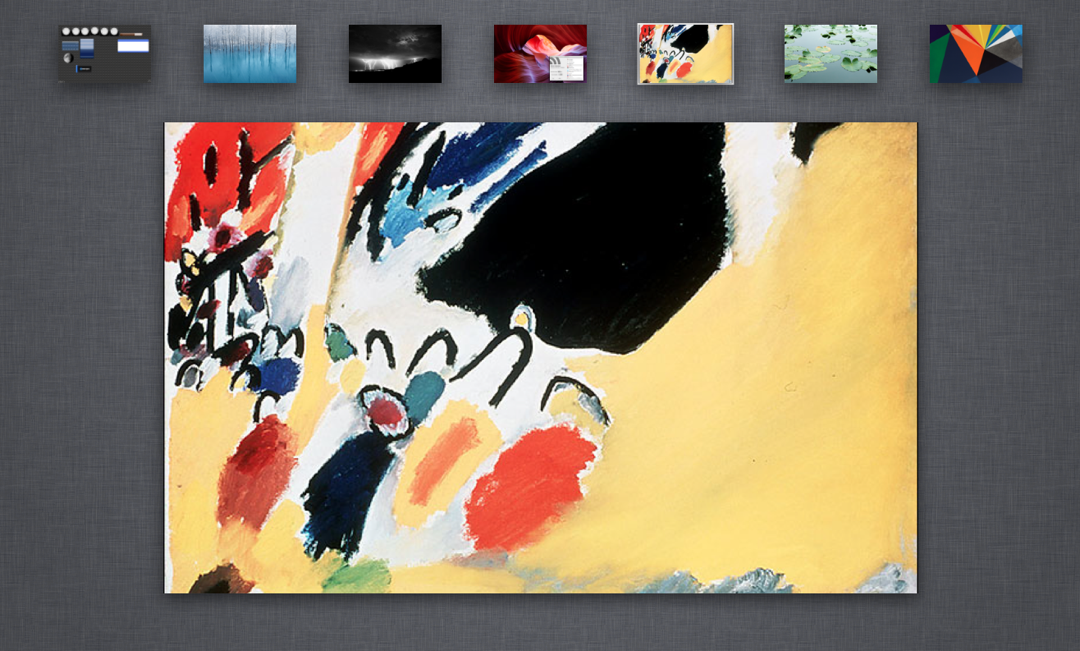
Desktop
A change in the way the desktop images display has been introduced. Previously, selecting a desktop picture would display that image on every desktop or space as Apple now calls them (see Mission Control). Now each space can have a separate desktop picture.
The Desktop pane is in two main parts. At the top left is the current desktop image displayed as a thumbnail. This changes if the user works in another space which has a different desktop picture allocated. The name of the picture is shown just to the right of the thumbnail panel.
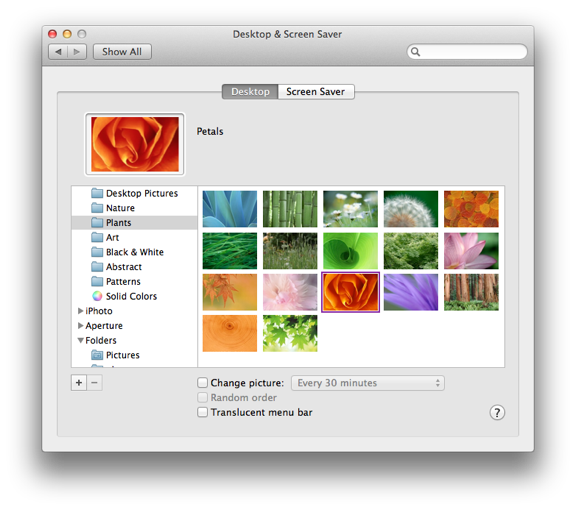
While previously there were four ways to display the image (Fill Screen, Fit to Screen, Stretch to Fit Screen, Center, and Tile) these are no longer available.
Below the thumbnail is a split panel for selection of a desktop picture. This can be selected from a standard set of system images under a menu item, marked Apple. The folders are: Desktop Pictures, Nature, Plants, Art, Black & White, Abstract, Patterns and Solid Colors. There are several new pictures to choose from.
iPhoto albums are also included, giving access to a user's own photographs. As I use Aperture I added these albums to my list. Below these two menu items are Pictures folders. Using a + icon at the bottom of the panel a Finder panel opens and we may also add our own folder selections. The - icon removes unwanted folders.
When any folder is highlighted, the images in that folder appear in the main panel. Clicking on any picture makes that the desktop picture for the current space. The picture also appears as a thumbnail but will change as a new space is accessed. There is no Undo button.
Below the panels are three checkboxes. Selecting the first makes it possible to change the picture with several time-settings, from 5 seconds up to a day. There are two other options: "At login" and "Waking from sleep". This feature only works for those spaces it is applied to: a user can have one or more spaces that change the pictures, while others keep the same image.
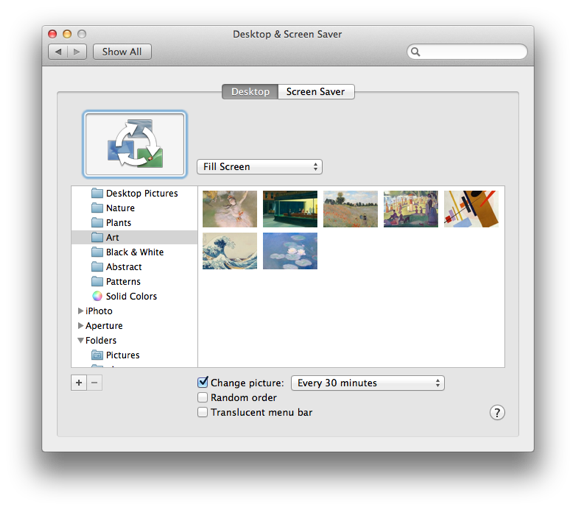
If the Change picture box is checked, a
Random order item just below becomes available. When the checkmark in the Change picture box is removed, the picture originally selected is shown.
At the bottom of the panel is a checkbox that toggles the translucent menu bar (at the top of the screen) On or Off. When checked, the menu bar is semi-transparent; when unchecked it is solid white.
An email from a local user -- also using the latest version of OSX -- concerning the button for the Tile and other options had me take another look at the Desktop panel. I discovered that by clicking on a Pictures folder in the left-hand panel and selecting an image, the button appeared. However, the other spaces, each of which currently uses a different desktop picture, did not have the button. If I then selected an image from one of the non-Apple folders, the button would reappear. I am unable to explain this apparently inconsisten behaviour.
Screen Saver
Immediately the Screen Saver panel is opened, it is evident that there have been changes. Like Desktop images, Screen Savers are in two groups. These are now named Slideshows and Screen Savers.
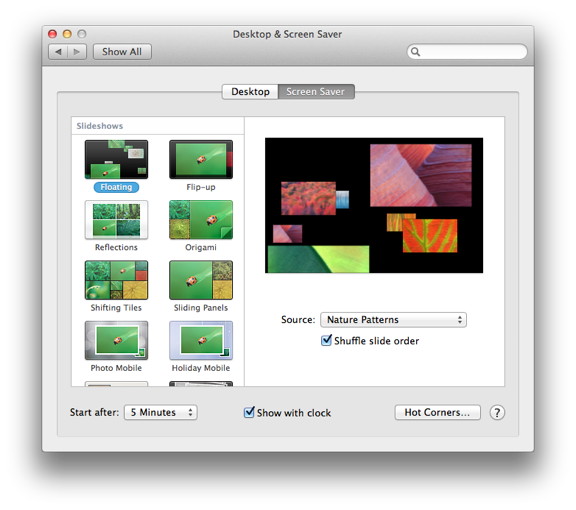
The Slideshows section offers 14 ways in which images on the computer may be used as screen savers. The effects are like slideshows available in iPhoto: Floating, Flip-up, Reflections, Origami, Shifting Tiles, Sliding Panels, Photo Mobile, Holiday Mobile, Photo Wall, Snapshots, Vintage Prints, Scrapbook, Ken Burns and Classic. To indicate what each might look like, thumbnails of the slideshows are shown in the left hand panel. All use the Ladybug desktop picture as illustration.
When one of these is selected, the user is offered a button marked "Source". This can be used to select a folder or album from which pictures can be used. In my case, as well as iPhoto and Aperture, there was a link to Facebook and Flckr. There are also four default sources included with the installation: National Geographic, Aerial, Cosmos, and Nature Patterns. As a source is selected, so they are shown in a small window above the selector button. a checkbox below the selector button is to allow shuffling of image order.
The Screen Savers will be familiar to users of OS X 10.7, Lion, but there are now only 7 available: Flurry, Arabesque, Shell, Message, iTunes Artwork, Word of the Day, and Random (a screen saver is selected at random). The rather beautiful cloud effect of the RSS screen saver is no longer available, indicating that (as these feeds have disappeared from Safari and Mail) Apple will no longer use these at all.
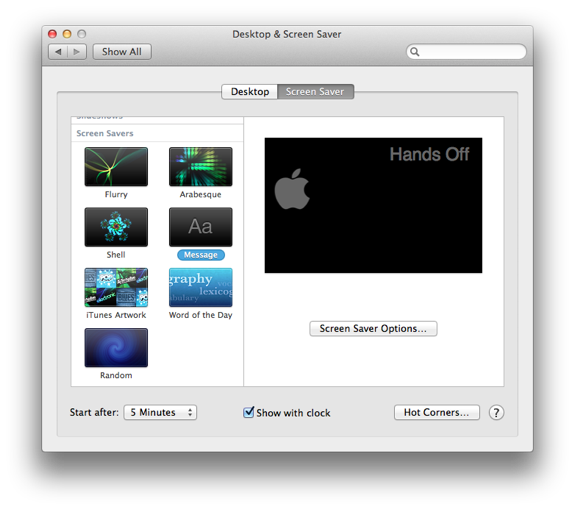
When one of the screen savers is selected a mini version appears in the window to the right and a button for available Options can be pressed. These are not the same for each screen saver and not all screen savers have options:
- Flurry - a Color button with 13 options (Fast Cycle was default), and sliders for streams (few - many), Thickness (thin - thick) and Speed (fast - slow);
- Message allows the message itself to be typed in (I entered "Hands Off");
- iTunes Artwork - there are two sliders for Rows (2 - 8) and Delay (0 - 5, with 2 seconds as default);
- Word of the Day has a button to select the dictionary to be used - the New Oxford American Dictionary and a Japanese dictionary were available options.
There are three additional controls at the bottom of the screen: a button for selection of the time to start the screen saver (Never and time intervals from 1 minute to 1 hour); a checkbox for "Show with clock"; and a button for Hot Corners.
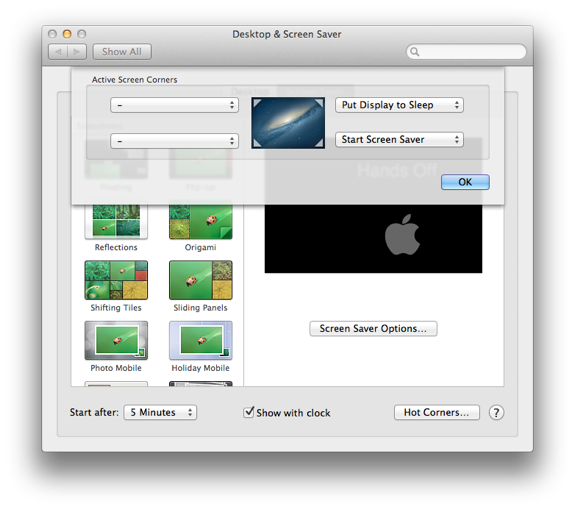
This opens a panel which has four buttons for selecting actions when the cursor is moved to the four corners of the screen. In my case, I use top right to Put Display to Sleep; and bottom right to Start Screen Saver. Other actions available are Disable Screen Saver, Mission Control, Application Windows, Desktop, Dashboard, Notification Center, Launchpad and a dash (-) for no action.
Graham K. Rogers teaches at the Faculty of Engineering, Mahidol University in Thailand. He wrote in the Bangkok Post, Database supplement on IT subjects. For the last seven years of Database he wrote a column on Apple and Macs.
|

|










